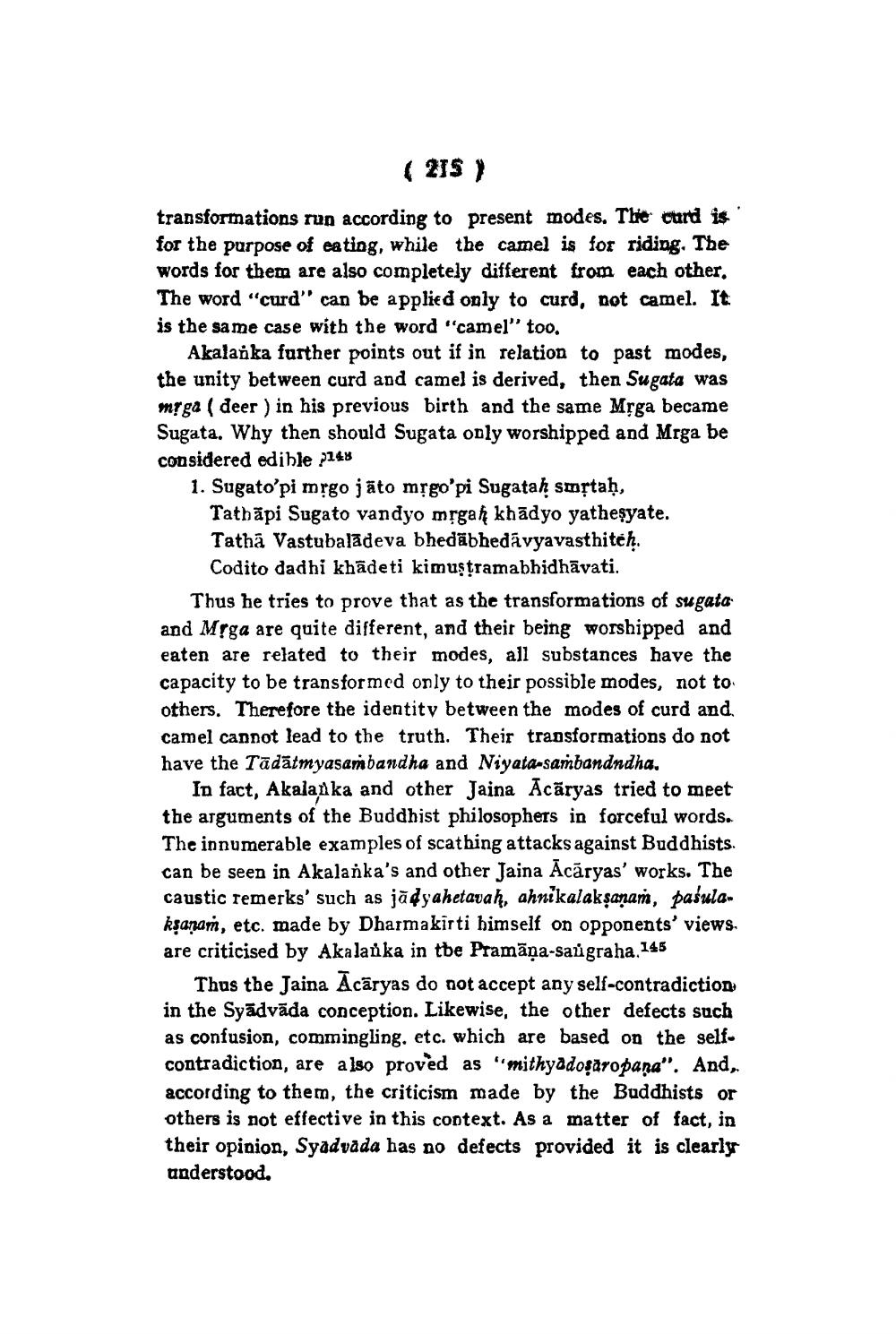________________
( 215 )
transformations run according to present modes. The curd is for the purpose of eating, while the camel is for riding. The words for them are also completely different from each other. The word "curd" can be applied only to curd, not camel. It is the same case with the word "camel" too.
Akalanka further points out if in relation to past modes, the unity between curd and camel is derived, then Sugata was mrga (deer) in his previous birth and the same Mrga became Sugata. Why then should Sugata only worshipped and Mrga be considered edible p148
1. Sugato'pi mrgo jato mrgo'pi Sugataḥ smṛtaḥ, Tathāpi Sugato vandyo mṛgah khadyo yatheṣyate. Tathā Vastubaladeva bhedäbhedavyavasthiteḥ. Codito dadhi khadeti kimuṣṭramabhidhāvati.
Thus he tries to prove that as the transformations of sugata and Mṛga are quite different, and their being worshipped and eaten are related to their modes, all substances have the capacity to be transformed only to their possible modes, not to others. Therefore the identity between the modes of curd and. camel cannot lead to the truth. Their transformations do not have the Tādātmyasambandha and Niyata-sambandndha.
In fact, Akalanka and other Jaina Acaryas tried to meet the arguments of the Buddhist philosophers in forceful words. The innumerable examples of scathing attacks against Buddhists. can be seen in Akalanka's and other Jaina Acāryas' works. The caustic remerks' such as jādyahetavah, ahnikalakṣaṇam, paśulakṣaṇam, etc. made by Dharmakirti himself on opponents' views. are criticised by Akalaňka in the Pramana-saugraha.145
Thus the Jaina Acaryas do not accept any self-contradiction in the Syadvada conception. Likewise, the other defects such as confusion, commingling, etc. which are based on the selfcontradiction, are also proved as "mithyadosaropana". And, according to them, the criticism made by the Buddhists or others is not effective in this context. As a matter of fact, in their opinion, Syadvada has no defects provided it is clearly understood.




